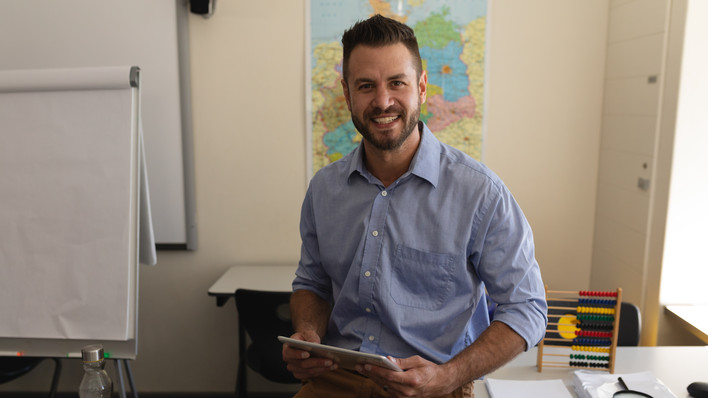Schools today are embracing creative learning environments, such as “genius hours” and “makerspaces.” Read on to see how one Kansas elementary school is helping teachers adapt their lesson plans to empower students and accelerate learning.
SHAWNEE, Kan. — Librarians in the Shawnee Mission School District are making way for “the maker movement,” and some worry where that story is going.
Reading stories, of course, has been a big part of what Jan Bombeck does with children. “Stories, stories and more stories,” she told the school board last month.
The Ray Marsh Elementary School directory lists Bombeck as “librarian” because she is state-certified to be one. But at least four Shawnee Mission grade schools have hired “innovation specialists” to run their libraries when fall classes open.
That’s the language of the maker movement, which seeks to convert once-quiet school spaces — usually in the libraries — into hands-on laboratories of creation and computer-assisted innovation.
The Kansas City Star reports that the movement, taking place nationwide, is more about robotics than reading.
In fact, the word “librarian” didn’t come up in the job description for an innovation specialist at Merriam Park Elementary. “Stories” wasn’t there, either.
No mention of “books,” ”literature” nor “shelves.”
“They’re replacing our retiring librarians with these innovation people” who need only to be certified to teach elementary education, Bombeck said. “It’s like they’re avoiding people with library certification.”
District administrators say that’s not the case. They do acknowledge, however, that grade schools haven’t much need anymore for the libraries of 20 years ago — when they stocked books, gave research help, suggested age-appropriate literature and provided a cozy corner in which kids could turn pages.
Today all Shawnee Mission pupils are issued an electronic tablet or MacBook, providing them many times the information once squeezed onto library shelves.
“Now that they have those digital resources in hand, no longer do I have to get up and walk my class to the library,” said Michelle Hubbard, assistant superintendent of leadership and learning.
This past weekend at Union Station, hundreds of area kids demonstrated what it’s about at the sixth annual Maker Faire: They programmed 3-D printers to craft sculptures. They used laptops to help Lego robots complete assigned tasks. They showed off sewing, gardening, electrical wizardry and consumer products of their own making.
“This is all part of the maker movement. It’s also tied to the engineering and science skills, which are among the critical needs of our future workforce,” said Christy Ziegler.
Her job title in the Shawnee Mission district — assistant superintendent of innovation and performance — speaks to the times.
But the times have put another job title, librarian, in jeopardy, said Leslie Preddy, president of the American Association of School Librarians.
“To call yourself a librarian, you need to have that training and to be certified,” said Preddy, who works in a school district near Indianapolis. “If you replace a certified librarian with someone who’s just an expert in technology, you’re losing half of the role that school libraries are supposed to be serving.
“You still need someone who is a champion of reading.”
Taking a stand
So Bombeck of Overland Park took a stand.
At the May 23 meeting of the Shawnee Mission school board, the librarian stepped up to an open mic and set on the gymnasium floor a book, Harvesting Hope: The Story of Cesar Chavez.
She told the board that when she finished reading the book to fifth-graders, “the class clapped, and one boy said, ‘That is the best story I have ever heard!’ “
As Bombeck spoke, at least 10 other librarians rose from their seats in support.
“Several elementary principals have expressed a desire to turn the library into only a makers space without any library curriculum,” Bombeck said.
“I have never ‘just read stories’ and checked out books. I have taught digital citizenship, copyright law and internet safety. I have taught research skills and database use.”
Maker spaces are great, she said.
“However, our future architects, doctors, engineers and teachers will miss learning valuable lessons if no one has time for ‘just stories.’ “
When summer break arrived, some recently retired educators commended Bombeck for speaking up.
Ellie Seemann, who just finished her final year as the Merriam Park librarian, said that offering maker spaces and traditional library services shouldn’t be viewed as an either-or proposition. “I hate to hear it talked about as one or the other,” she said.
Jacqueline Humpert taught remedial reading in the district for nearly 40 years, relying heavily on librarians.
“I know we’re in a technological age and all that,” Humpert said. “But as a taxpayer, I don’t want our libraries to go in the direction of whatever the district is talking about.”
District officials say part of a $233 million bond referendum that voters passed in 2015 directed funds toward remaking school libraries. They say the innovation goals were well-communicated at the time.
As for staffing, assistant superintendent Hubbard said: “It’s really more about the skills that an individual brings to lift kids to that level than it is about certification.”
Whether or not educators have completed a master’s program in library science, which is one route to certification, Hubbard said that “all great teachers can teach kids to read and teach them research skills.” She said she would expect those skills to be highly considered whenever maker-minded teachers are hired to replace retiring librarians.
And not all librarians are bothered by the trend. Many young and old have become “absolute rock stars” in adopting innovative lessons, Hubbard said.
But “a big concern” is expressed by Mirah Dow, interim dean of Emporia State University’s School of Library and Information Management.
“According to Kansas policy, a person without the library media specialist license cannot have the job title of librarian or media specialist,” Dow said. By allowing teachers to replace certified librarians who retire is “one way to get around hiring a professional with graduate-level information and technology literacy expertise.”
While it’s true that many schools lack certified librarians, districts that dismiss their training and skill sets face educational risks that school administrators may not even know, said Preddy of the American Association of School Librarians.
A growing trend
Although trends in education come and go, the interest in maker spaces — some schools prefer the single word “makerspace” — is only heading up.
Most elementary libraries in Liberty Public Schools already have maker spaces. Andrea Sumy, the district’s library media director, said the hands-on activities blend well with students’ access to the libraries’ computers, maps and books.
When certified librarians in Liberty have retired, as four did in 2015, they’ve been replaced by librarians already certified or seeking it, Sumy said. “We still see the value of that certification.”
The Johnson County Central Resource Library in Overland Park recently expanded its maker services and named the addition the Black & Veatch MakerSpace. The engineering firm is providing three years of equipment support. The space’s 3-D printers and audio-visual room are in high demand among parents and visiting school pupils.
And nobody is told to be quiet.
Ryan Bell, a maker educator at Science City, provides training to local teachers eager to incorporate the concepts into their curricula: “We help teachers get all that math, language and science education in there but still make it hands-on and fun for the kids.”
And for adults, the lessons can drop jaws. Case in point in the Shawnee Mission district: a team of students that planned the design of a human liver.
That quest recently earned four Rosehill Elementary pupils an honorable mention in a national competition. They researched shortages in the liver transplant program, worked with Children’s Mercy Hospital in learning about a liver’s cells and chemical properties and wrote up code for their school’s new 3-D printer.
Voila! A blueprint for doctors to “print” a lifesaving organ.
The inventors were all girls, all 11.
“Amazing,” said the district’s Ziegler. “That is the goal — problem-solving.”
This article was written by Rick Montgomery from Hutchinson News, The; Hutchinson, Kan., and was legally licensed through the NewsCred publisher network. Please direct all licensing questions to legal@newscred.com.
![]()



